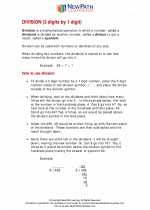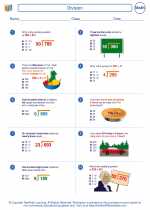Factoring by Substitution
Factoring by substitution is a technique used to factorize a given quadratic expression by making a substitution that simplifies the expression into a form that can be easily factored. This method is particularly useful when the quadratic expression is not easily factorable using traditional methods such as factoring by grouping or trial and error.
Step-by-Step Guide for Factoring by Substitution
- Identify the Quadratic Expression: Start by identifying the given quadratic expression that you want to factorize.
- Make a Substitution: Let a new variable equal to a portion of the original expression. For example, if the expression is in the form \(ax^2 + bx + c\), let \(u = x^2\) to simplify the expression.
- Factor the Substituted Expression: Factor the substituted expression using any suitable factoring method such as difference of squares, perfect square trinomial, or grouping.
- Replace the Substituted Variable: Replace the substituted variable with the original variable to obtain the factored form of the original quadratic expression.
Example:
Factor the quadratic expression \(4x^2 + 12x + 9\) using substitution.
- Identify the Quadratic Expression: The given quadratic expression is \(4x^2 + 12x + 9\).
- Make a Substitution: Let \(u = 4x^2\) to simplify the expression.
- Factor the Substituted Expression: The substituted expression \(u + 12x + 9\) can be factored as \((u + 9)(u + 1)\).
- Replace the Substituted Variable: Replace \(u\) with \(4x^2\) to obtain the factored form: \((4x^2 + 9)(4x^2 + 1)\).
By following the steps above, the quadratic expression \(4x^2 + 12x + 9\) has been factored using substitution.
Practice Problems:
Now, let's try some practice problems to solidify your understanding of factoring by substitution:
- Factor the quadratic expression \(9x^2 - 6x + 1\) using substitution.
- Factor the quadratic expression \(16x^2 - 40x + 25\) using substitution.
Remember to make the appropriate substitution and follow the step-by-step guide to factorize each expression.
.◂Math Worksheets and Study Guides Sixth Grade. Division
Study Guide Division
Division  Worksheet/Answer key
Worksheet/Answer key Division
Division  Worksheet/Answer key
Worksheet/Answer key Division
Division  Worksheet/Answer key
Worksheet/Answer key Division
Division 

 Worksheet/Answer key
Worksheet/Answer key
 Worksheet/Answer key
Worksheet/Answer key
 Worksheet/Answer key
Worksheet/Answer key

The resources above cover the following skills:
Connections to the Grade 6 Focal Points (NCTM)
Number and Operations: Students' work in dividing fractions shows them that they can express the result of dividing two whole numbers as a fraction (viewed as parts of a whole). Students then extend their work in grade 5 with division of whole numbers to give mixed number and decimal solutions to division problems with whole numbers. They recognize that ratio tables not only derive from rows in the multiplication table but also connect with equivalent fractions. Students distinguish multiplicative comparisons from additive comparisons.